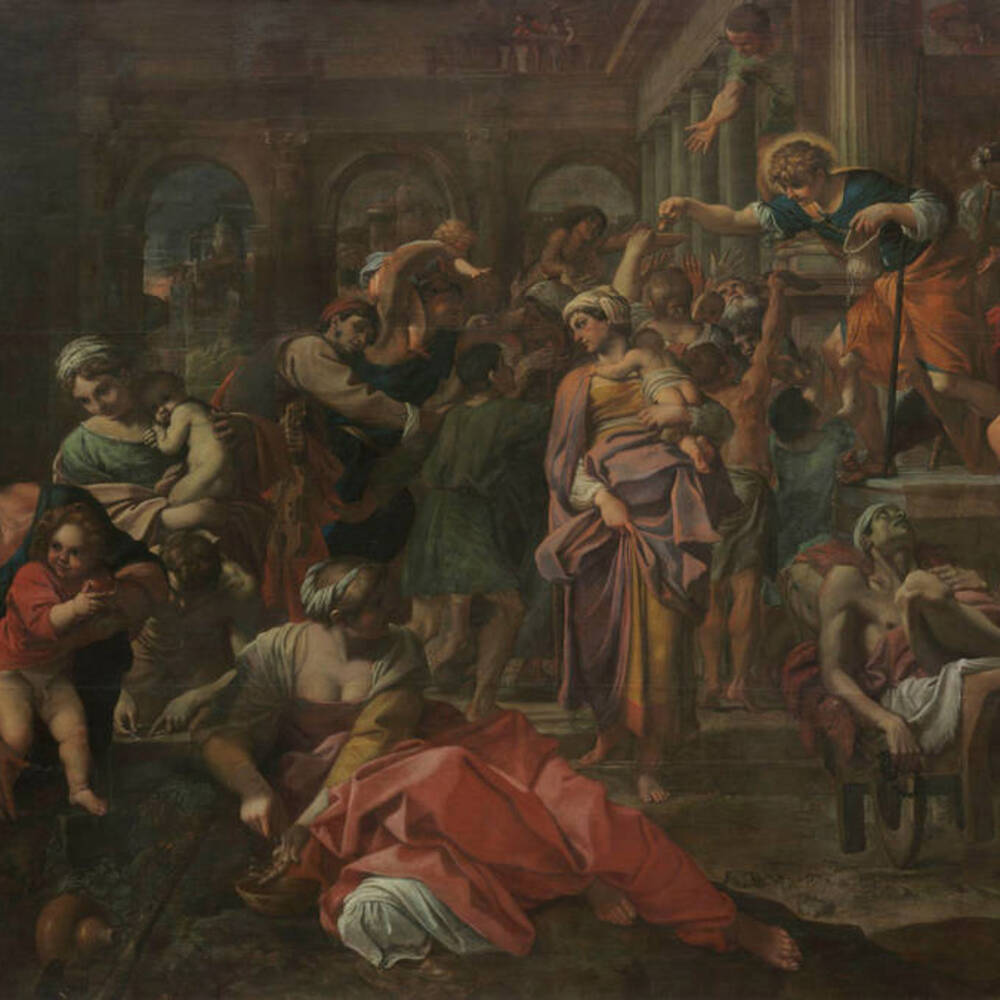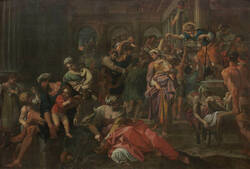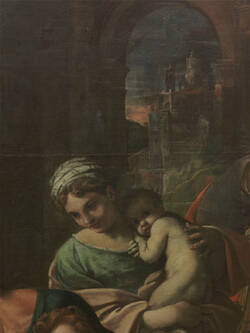This painting is a milestone in the history of art: it is considered to be the first large multi-figure history painting of the Baroque period. It was created for the Confraternity of St Roch in Reggio Emilia. At top right, the saint is seen distributing his inheritance. A throng of needy people crowd around him, including children, a blind violinist and a sick man. The group at bottom left shows happy recipients of alms. The realism and the vitality expressed in the gestures and facial expressions of the figures are typical of the new era.
Further Media



This monumental painting by Annibale Carracci was commissioned by the Confraternity of Saint Roch. Originally, it hung in their Oratory – rather like a chapel – in the Italian town of Reggio Emilia. Saint Roch lived in the fourteenth century. According to legend, after distributing his inheritance to the poor, Roch set out on a pilgrimage to Rome. On his way, he cured many people suffering from the plague. On his return journey, though, he fell ill with the plague himself. Finally, he recovered and returned to his hometown of Montpellier. Saint Roch was especially venerated in Italy, which had numerous plague epidemics. No doubt, the commission for this work was also influenced by the devastating epidemic of the plague in northern Italy in 1576 to 1577.
In the late 1500s and early 1600s, centuries before the modern welfare state was founded, religious confraternities had a key social function. This painting was intended to constantly exhort the members of the confraternity to preserve in their most important task – helping the poor and the weak. By showcasing the happiness and contentment of those receiving alms in the foreground to the left, Carracci gave the beholders of this work a visual reminder of the positive effects of charitable giving.
- Location & Dating
- c. 1594/95
- Material & Technique
- Oil on canvas
- Dimenions
- 331 x 477 cm
- Museum
- Gemäldegalerie Alte Meister
- Inventory number
- Gal.-Nr. 305